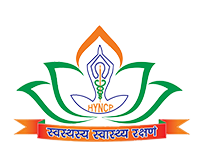
Naturopathy
Naturopathy is the most ancient health care mechanism that amalgamates modern scientific knowledge with traditional and natural forms of medicine. Relying on the healing power of nature, Naturopathy stimulates the human body’s ability to heal itself. It is the science of disease diagnosis, treatment, and cure using natural therapies including dietetics, botanical medicine, homeopathy, fasting, exercise, lifestyle counseling, detoxification, and chelation, clinical nutrition, hydrotherapy, naturopathic manipulation, spiritual healing, environmental assessment, health promotion, and disease prevention.
Historical root of Naturopathy
The technique of Naturopathy was brought to the United States in the 1800s from Germany. The term Naturopathy was tossed by John Scheel in 1895 and was popularized by Benedict Lust. Known as the father of modern-day Naturopathy, he also got appreciated for disseminating the knowledge of Naturopathy in the US in 1992. The Naturopathy movement was initiated in Germany and other western countries with water cure therapy which is also called Hydrotherapy. Vincent Priessnitz was the one who made Water Cure famous in the world and later on, some more personalities made their contribution to this work. Louis Kuhne deserves a special mention in this regard as he coined the principle of the Unity of Diseases and Treatment and also gave a theoretical base to this method.
Naturopathy in India
In India, revival of Naturopathy took place with the translation of Germany’s Louis Kuhne’s book ‘’New Science of Healing’’. The translation was done in the Telugu language by Shri D. Venkat Chelapati Sharma in 1894. Afterward, it was translated into Hindi and Urdu languages in 1904 by Shri Shroti Kishan Swaroop. All the efforts hugely gave Naturopathy a wide propagation.
A book named Return to Nature by Adolf Just greatly inspired Gandhiji and made him a firm believer in Naturopathy. After writing several articles for Naturopathy in his newspaper Harijan, he also did some experiments on himself, his family members, and members of ashram. Gandhiji also used to stay at the Nature Cure Clinic of Dr. Dinshaw Mehta situated in Pune from 1934 to 1944 and thus, the government of India established the National Institute of Naturopathy in 1986 in his memory. Due to the Influence of Gandhiji, many leaders came in support of this health movement. The names such as former Prime Minister Shri Morarji Desai, Ex-President Shri V.V Giri, Acharya Vinoba Bhave, Ex-Governor of Gujarat Shri Shrimannarayanji, and Shri Balkova Bhave deserve special recognition in this regard.
Indian Naturopathy movement started primarily in the states of Andhra Pradesh, Gujarat, Bengal, Maharashtra, and Uttar Pradesh. To promote this natural healing therapy, some people worked hard and significantly contributed to their science. They were: Dr. Mahavir Prasad Poddar, Dr. Janaki Sharan Varma, Shri Sharan Prasad, Dr. Vitthal Das Modi, Dr. Kulranjan Mukherjee, Dr. Khushi Ram Dilkash, Dr. S.J. Singh, Dr. Hiralal, Dr. Sukhram Das, Dr.J.M. Jussawala, Dr. Sukhbir Singh Rawat, Acharya K. Laxman Sharma, Dr. B. Vijaya Laxmi, Dr. Ganga Prasad Gaur Nahar, Dr. M.M. Bhamgara, Dr. Vegi Raju Krishnam Raju, etc.
Naturopathy and its advantages
By educating you about the root cause of your health issues, Naturopathy always aims to make you aware of healthy changes in order to get well. From advising on dietary and lifestyle changes to guiding you towards achieving emotional wellbeing; Naturopathy holds a prominent place in the world of medicine. If we take a broader glance at today’s scenario, Naturopathy is widely known for its advantages and hugely applauded for its various modes of therapies. It has been accepted as an independent system of medicine and presently, there are 12-degree colleges that are imparting a five and half year’s degree course of Bachelor of Naturopathy & Yogic Sciences (BNYS).
